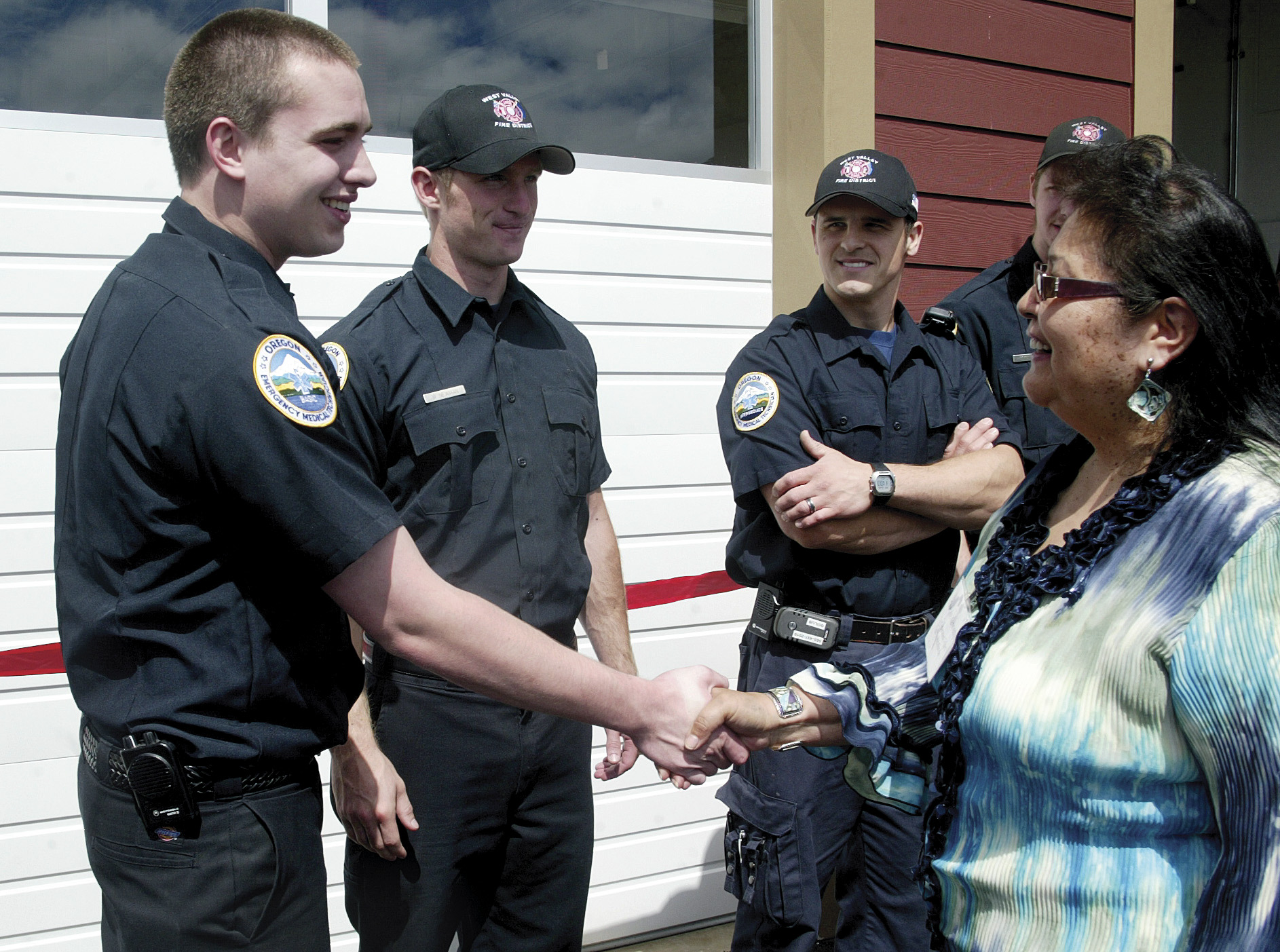Tribal Government & News
Yesteryears -- July 1, 2020

2015 – The Willamina School Board approved a new policy regarding flag displays that accommodated a request from Tribal Council Chairman Reyn Leno to hang the Grand Ronde Tribe’s flag in the school gym. The Tribe’s flag would hang next to the U.S. and Oregon flags at the district’s schools for its approximately 30 percent Native American student population to see.
2010 – The Tribally funded, $1 million Grand Ronde Fire Station opened at McPherson and Grand Ronde roads. The new fire station would be operated and managed by the West Valley Fire District and have two firefighters assigned per shift to provide fire and emergency medical services to the Grand Ronde area 24 hours a day, seven days a week. The new fire station included three vehicle bays, three dorm rooms, kitchen, laundry, meeting room with workout equipment, storage area and two offices.
2005 – The Grand Ronde and Siletz Tribes broke ground on a 15-acre, multi-use project in Keizer, which would be known as Chemawa Station. “It’s a time of celebration,” Tribal Council Chairwoman Cheryle A. Kennedy said. She added that the plans had been almost four years in the making. The project was expected to include 110,000 square feet of retail, restaurant, professional office, light industrial and flexible space. The site was originally part of the Chemawa Indian School property.
2000 – The Confederated Tribes of Grand Ronde signed an agreement with the American Museum of Natural History in New York City to ensure Tribal access to the Willamette Meteorite. The Tribe sought access as a way to preserve its religious, historical and cultural relationships with the 15.5-ton meteorite traditionally known as “Tomanowos.” “I can’t begin to tell you how much this means to us,” Tribal Council Chair Kathryn Harrison said. “Since the termination of our Tribe by the federal government in 1954, we have worked hard to gather our people together to share our unique and important past. This agreement goes even further because it looks toward our future. I consider it to be one of the outstanding milestones we’ve reached for our Tribal members.”
1995 – Tribal Council approved construction of a 28,000-square-foot health and wellness clinic in Grand Ronde. The clinic would provide services to Tribal members regardless of where they reside and employ 50 to 60 people. “Indian Health Service appropriated the funding for the planning and design of the clinic,” Human Services Division Manager Cheryle A. Kennedy said. She added that the Tribe also was exploring funding options for construction. The next steps in the process included site selection, securing financing and selecting a construction company.
1990 – No edition available.
1985 – Tribal Council continued to meet with the Bureau of Land Management on the Reservation Plan. The council expected to have a draft of the plan soon. “The process of working with BLM has taken longer than anticipated,” a Smoke Signals article stated. “Through various meetings, the Tribal Council has submitted proposals to the BLM. Counterproposals from the BLM have enabled the Tribal Council to come closer (to) a draft of the Reservation Plan.”
Yesteryears is a look back at Tribal history in five-year increments through the pages of Smoke Signals.
